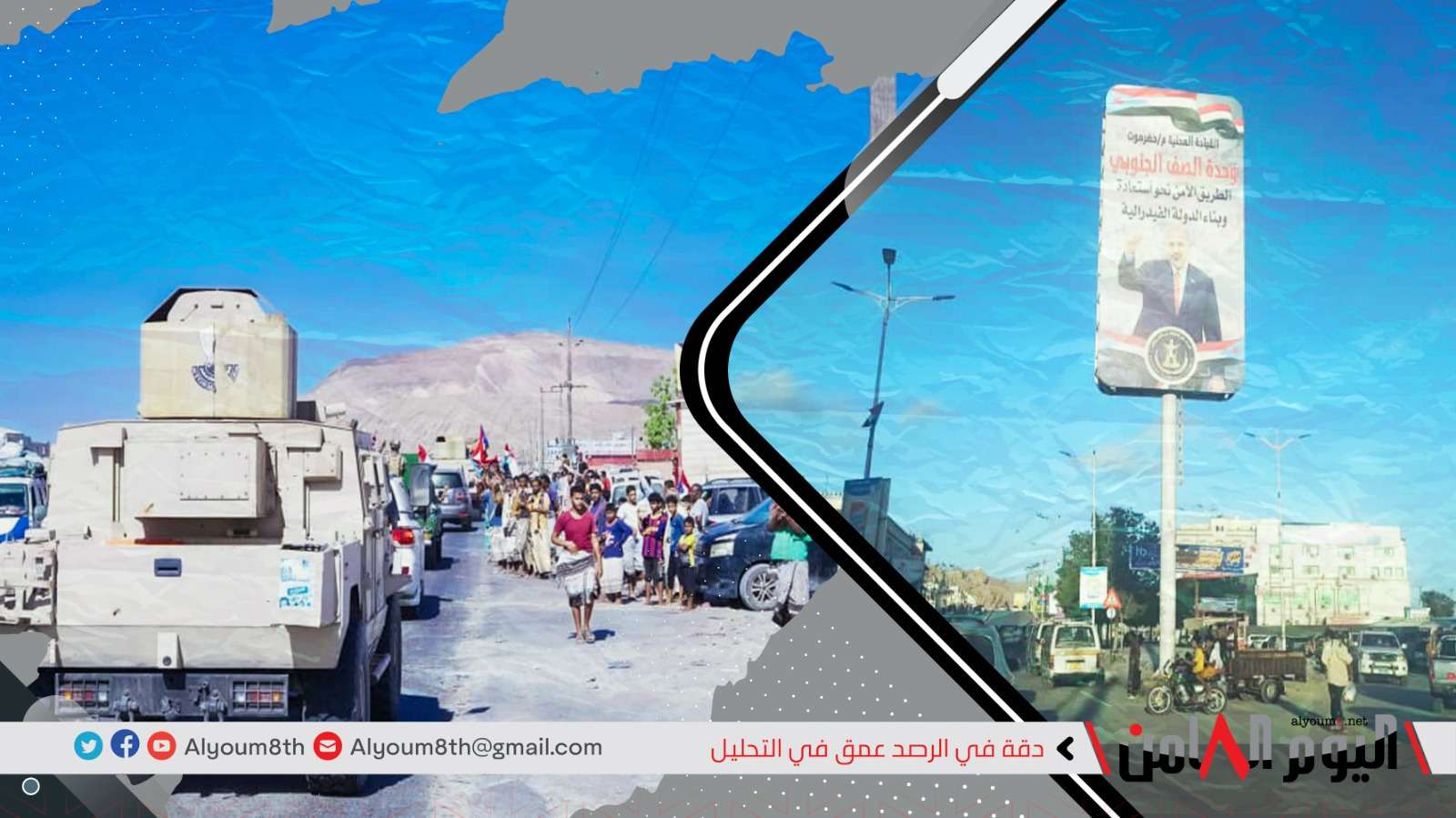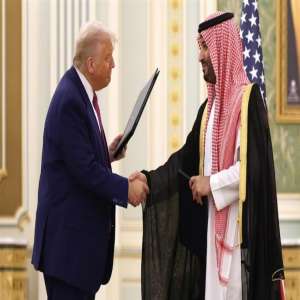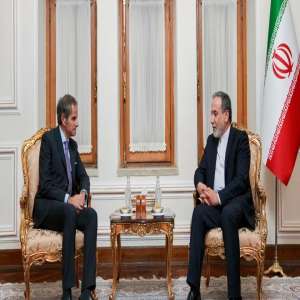..Saudi-Iran rapprochement deal
Beyond Saudi Arabia's Departure: Prioritizing the Southern Question for a Peaceful Yemen
The military solution has proved ineffective in resolving the southern issue since 1994, necessitating the exploration of alternative approaches. Acknowledging the south's right to self-determination is a crucial first step towards fostering peace in Yemen

Saudi withdrawal from Yemen's civil war may have provided a glimmer of hope for the international community and those who view the Yemeni
The Saudi withdrawal from Yemen's civil war is inevitable, as foreign powers typically withdraw from local conflicts when their objectives are fulfilled or when the cost of their military intervention can no longer be afforded. In the Yemeni case, the unforeseen Chinese-mediated accelerated the implementation of the Saudi withdrawal plans, resulting in an earlier date than originally predicted. The Saudi announcement of the end of their operations in Yemen was celebrated by the international community, particularly those who believe that the Yemen conflict is primarily a Saudi aggression against its impoverished neighbor, as portrayed by the Houthi narrative of this Yemeni conflict. For this group of state officials, NGO leaders, and peace activists, the Saudi withdrawal from the conflict is seen as a positive development that will naturally bring the conflict to an end.
Despite any initial optimism, an experienced analyst with a deep understanding of the underlying tensions driving conflict within Yemen would quickly recognize that this assertion is misguided and unlikely to end the ongoing internal strife. The war in Yemen is a multifaceted conflict that has been exacerbated by deeply ingrained internal divisions. At its core are three primary layers to this conflict. The first and apparent layer is the Saud-Houthi conflict, with roots that go back as far as the six Sa'dah wars between the Houthis and Saleh regime. The Houthis accused the Saudi government of supporting Saleh’s war effort against them. In retaliation, in the last war (August 2009-Feb 2010), the Houthis carried out cross-border attacks and killed a Saudi soldier, and took control of a few nearby villages, which provoked a full-blown military operation against the group. The Houthi’s distrust of the Saudis heightened after the kingdom built a coalition to bring Hadi and his government back to power in March 2015.
This brings us to the second layer of the conflict, which is mainly fought between the Government of Yemen on one side and the Houthis on the other side. The Hadi government saw the forceful Houthi take-over of the capital Sana'a in September 2014 as a coup d'état against the political process it was leading in the transition period. While Hadi is no longer in the picture, the Presidential Leadership Council (PLC) maintains the same narrative that peace can only be realized only if the Houthis reverse their violent seizure of power and become engaged in the political process like everyone else. With the possibility of a military defeat of the Houthis decreasing, there is now a greater chance of resolving this aspect of the conflict. Consequently, the PLC government is more open to making concessions to the Houthis, particularly since their primary backer (the Saudi-led coalition) is withdrawing from the conflict.
The third layer of conflict presents a formidable challenge, as it extends beyond the Houthis and involves an intricate landscape of high-stake contention among the factions that comprise the anti-Houthi camp. Specifically, in the next period, some powerful elements within the Government of Yemen are likely to realign themselves with the Houthis in opposition to the Southern Transitional Council (STC) and its southern allies that are openly seeking to reinstate the pre-1990 southern Yemeni state. Despite the growing recognition of the significance of the southern issue in Yemen since the Hadi-led transition and the deliberations of the National Dialogue Conference, political elites have failed to propose, let alone implement, acceptable solutions to ameliorate the situation. Serious discussions about potential solutions have been consistently delayed, with the justification that the timing is not appropriate. Initially, the focus was on "removing the dictator” in 2011, then stabilizing the transition between 2012-2014, and now the consideration of the civil war has become the reason for further postponement. However, the consequences of these delays have been devastating with significant costs in protracted civil wars and instability not only in southern territories but to the entire country. For this reason, urgent action to resolve the southern issue must be taken to prevent further cycles of war. As time goes by, resolving the Southern issue becomes increasingly difficult due to the accumulation of grievances and practices of political exclusion.
The evolving dynamics on the ground since 2015, particularly with the establishment of a unified leadership structure and quasi-state apparatus in the south under the STC, will undoubtedly provide the south with increased leverage to shape the peace process in the country. What sets the STC apart from other local conflict actors is that it represents a diverse range of interests instead of promoting parochial interests that benefit a narrow elite. Deeply rooted in the Hirak movement, the STC is mandated to lead the south towards independence, safeguard its strategic interests, and improve governance by providing services and stabilizing security. Unlike other political actors, the STC cannot be swayed by high-level political appointments or government access as it understands that deviating from its mandate would lead to political suicide. Hence, the STC's interests are closely aligned with those of the grassroots movement.
Failure to address the southern issue comprehensively will continue to present a significant security challenge for Yemen and the region, as it is intrinsically linked to Yemen’s governance problems, power dynamics, and regional geopolitics. The military solution has proved ineffective in resolving the southern issue since 1994, necessitating the exploration of alternative approaches. Acknowledging the south's right to self-determination is a crucial first step towards fostering peace in Yemen, as it would ease tensions surrounding one of the most contentious and complex issues at the center of the conflict. Thus, to prevent any escalation of conflict, a well-defined roadmap for a political settlement must be established prior to SLC departure. Although the Saudis may lack leverage over the Houthis, but they hold significant influence over the Yemeni government and the STC, as demonstrated by the 2019 Riyadh agreement. It's worth noting that Saudi Arabia has acted as a mediator in the past, most notably during the 2011 youth revolution that resulted in the GCC power transfer deal, successfully resolving the crisis between Saleh and the opposition.
When it comes to achieving peace in Yemen, there are valuable lessons to be learned from recent history. Firstly, we must focus on what is feasible rather than what is ideal. The unity agreement of 1990 has been problematic since its inception, as it lacked sufficient elaboration and details on power-sharing between the northern GPC and southern YSP. Secondly, despite the numerous agreements signed, they have rarely resulted in tangible peace. The main reason for this is the lack of clear, viable implementation mechanisms. Rushing to sign agreements without detailed implementation plans will inevitably lead to short-lived truces. Thirdly, Yemen's unity and state structure should be left to Yemenis from all backgrounds and factions to decide and not be imposed by powerful elites in the government or outside powers. Yemen is much bigger than Sana’a and its surrounding elites. Diverse voices from periphery regions must be fully integrated into the peace process. Lastly, it's essential to establish a hierarchy of priorities and focus on the most pressing issues first. Ignoring the root causes of a conflict and addressing only its symptoms can create more problems in the long run. Yemen is undoubtedly facing other challenges besides the southern issue. However, the mishandling of this problem has given rise to new challenges that have undermined the legitimacy and capacity of the Yemeni state. Therefore, we must prioritize resolving the southern issue in the peace process to create a stable foundation for tackling other issues.
In conclusion, the Saudi withdrawal from Yemen's civil war may have provided a glimmer of hope for the international community and those who view the Yemeni conflict through a Houthi lens. However, a deeper understanding of the complex layers of the conflict reveals that there is still much work to be done to achieve lasting peace. The southern issue, in particular, must be addressed comprehensively to prevent further escalation of conflict and to foster stability in the country. The international and regional community should prioritize a realistic approach that involves all parties, acknowledges the right to self-determination for the south, and encourages Yemenis from diverse backgrounds to participate in the peace process. By focusing on feasible solutions and addressing the root causes of the conflict, there would be real prospects for a more stable and peaceful Yemen in the future.



